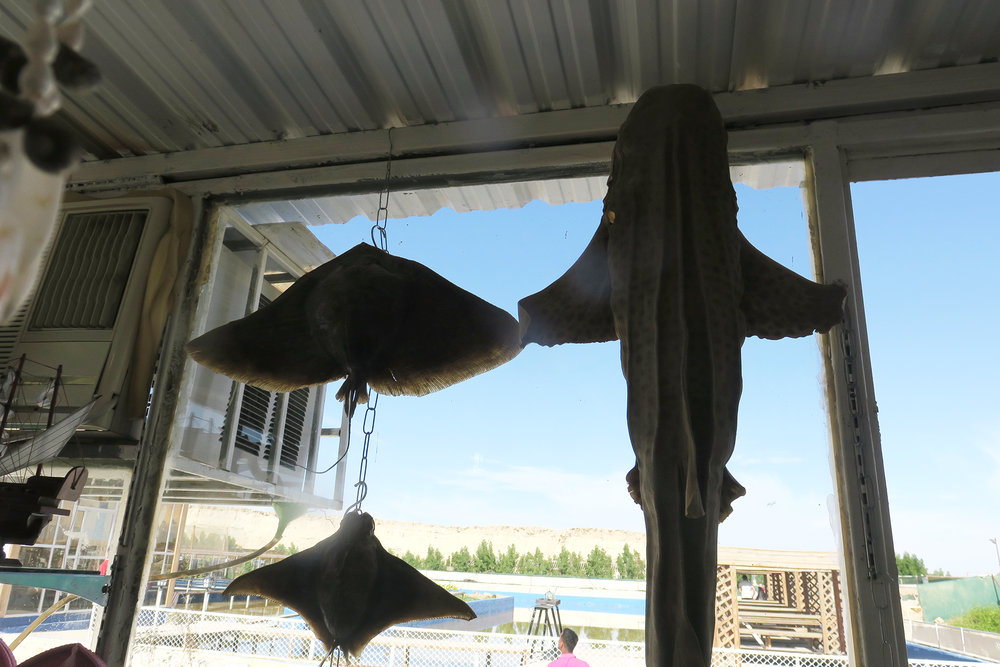Dimming the light of sharks' life

Sharks are hunters par excellence. They frequent a wide range of habitats. Most of sharks are magnificently designed. Multiple rows of replaceable triangular teeth, and also a battery of receptors that almost defy human comprehension, considered as the best tools for a precedent apex predator.
Humans ignorance
Exploitation by humans has taken a heavy toll on sharks population over the years. Direct killing for the entertainment of anglers or for trading shark products for souvenir have caused significant declines in their population.
James Higham and Michael Luck in the book of "Marine wildlife and tourism management" have pinpointed to targeted shark fisheries as a particular problem, which also happens in Iran.
The truth is that tourism industry can also have negative impacts on sharks' population. Higham and Luck pointed to the combined effects that have led to a significant decline in sharks' number: "Costal tourism developments can result in the removal of important mangrove habitat which act as nursery ground for young sharks."
Qeshm Island that is an Iranian Island in the Strait of Hormuz, separated from the mainland by the Clarence strait/ Khuran in the Persian Gulf. Qeshm is the largest island in Iran and has a magnificent fauna. Mangrove forests in Qeshm Island is a habitat to the sharks, however, there is no valid scientific study to decide the exact number of sharks in this area.
Passive killing with sharks being caught in nets set out for other species, has exerted pressure on shark populations. The actual extent of sharks' decline in Iran waters (Persian Gulf and Oman Sea) is still unknown because of lack of scientific information. But divers frequently mention the increased population of other species such sea urchins in sharks' habitats. What's going on?
The effect of purging sharks
Most of divers who dive around Iran waters say, population of sharks have collapsed across much of regions over the past several decades. But in some places such as Nayband Natural Park (a protected area which is located in Asaluye County, Bushehr Province), sharks decline have given rise to sea urchins' increase.
It means that the negative interaction between human and sharks, in turn affected the abundance of other species. The diet of adult sharks is made up of mainly hard- shelled molluscs (like clams and snails), crustaceans (like crabs and shrimps), star fish, and sea urchins. Other prey includes octopus and squid, some smaller invertebrates, and also bony fish.
Some ecologists explained the reasons as to why sea urchins is facing tangible increase is the absence of sharks. The unusual underwater scene change is unfolding because of no scientific data but it appears to be connected to sharks die-off.
The total number of sharks that remain is difficult to quantify. There are several reasons for that, including the diversity of nomadic and homing habitats exhibited by different species. Some specimens like Tiger Shark (Galeocerdo cuvier ) which is common worldwide in tropical and warm-temperate coastal waters such as Iran, for instance, is tending to frequent relatively local territories while others are known to roam over large distances. The tiger shark is also a species much sought after by big game anglers. As a result, the number of sharks can only be approximate.
Ecologists say the effects of sharks' die-off seem to be reverberating along seabed, altering the prey and predator relationships.
Live fossils
As scientists say, sharks are history. Sharks have swum in the oceans of the world for more than 100 times as long as humans lived on the earth. Scientists also have been able to determine that the earliest sharks existed more than 450 million years ago. But these ancient sharks were very different from the sharks of today.
The ancestors of most modern sharks can be traced back for only about 100 million years. Most of the evidence of these modern sharks consists of teeth. Archeological surveys in Abu Dhabi have recovered various items such as shark vertebrae and teeth from sites that are over 7,000 years old.
Sheena and Robert Coupe in the book of "Sharks, a great creature of the world bank" have explained that "For thousands of years' sharks have provided people with a valuable source of food. In many countries today fish and chips, bought from the local seafood shop, is a popular meal, and the fish sold is very likely to be one of several species of shark, even though it may be called skate or dogfish."
In addition, many sharks around the world are being destroyed outright because of foods. Sheena and Robert Coupe explained: "In Chinese cooking shark fins have been treated as delicacies for centuries, and in Greece and Rome shark flesh was regularly served at the best banquets. Sharks today form part of the staple diets of people as diverse as Lebanese, Vietnamese, West Indians, Indonesians, and also Sicilians. Even French chefs have recently been creating mouth-watering new dishes base on sharks."
Unfortunately, products such as shark oil or shark skins have good commercial sells. Medical uses and ornaments undoubtedly has had a severe effect on different populations. In some cases, arguments have been put forward to ban fishing of sharks but others argue that to do so would drive the market underground and into the hands of organized illegal groups, thus probably accentuating rather than solving the problem. The best hope for the future of these living fossils appears to lie in real conservation programs especially in our country, Iran.
Leave a Comment